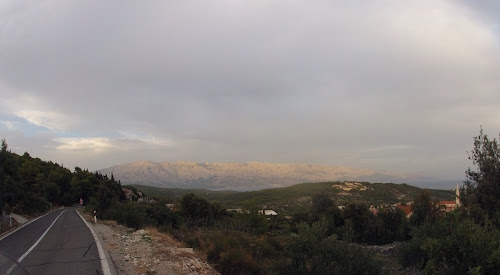Diocletian was a Roman Emperor from 284 to 305. Born to a family of low status in the Roman province of Dalmatia, Diocletian rose through the ranks of the military to become cavalry commander to the Emperor Carus. After the deaths of Carus and his son Numerian on campaign in Persia, Diocletian was proclaimed Emperor. Diocletian's reign stabilized the Empire and marks the end of the Crisis of the Third Century. Diocletian's reforms fundamentally changed the structure of Roman imperial government and helped stabilize the Empire economically and militarily, enabling the Empire to remain essentially intact for another hundred years despite having seemed near the brink of collapse in Diocletian's youth. Weakened by illness, Diocletian left the imperial office on 1 May 305, and became the only Roman emperor to voluntarily abdicate the position. He lived out his retirement in his palace on the Dalmatian coast, tending to his vegetable gardens.
The ground plan of the palace is an irregular rectangle (approximately 160 meters x 190 meters) with towers projecting from the western, northern, and eastern facades. It combines qualities of a luxurious villa with those of a military camp, with its huge gates and watchtowers. The palace is enclosed by walls, and at times, it housed over 9000 people. Subterranean portions of the palace feature barrel vaulted stonework.
We got a tour guide to walk with us and explain the history of the palace which was quite interesting. In the same group we met a young couple from Bristol in England and we will probably go there when we are in UK later in October.
We had a good lunch very close to the iron gate, the gate of the palace on the West side. Food was quite good and the creme caramel was one of the best we have had.
One of the highlights of our day was going up the bell tower and see Split from the highest point in the city. In the first section of the tower the height of each individual step was very high. Once inside the tower there was a set of iron stairs that were open which gave the feeling you were suspended in midair. A couple of people gave up when they got to this section. If you suffer by any kind of vertigo I assume this would be very difficult. The view and pictures up at the tower were worth the cimb though. We love bell towers and will always do then if possible as views are usually very nice.
We also went to the cathedral which is right inside the Palace. The cathedral is named after Saint Duje, patron saint of Split, who was a 3rd century Bishop of Salona. Salona was a large Roman city serving as capital of the Province of Dalmatia and about 8 Kms north from where Split is today. Saint Duje was martyred with seven other Christians in the persecutions of the Emperor Diocletian (the same that created the palace). So how about that, the Christian bishop is beheaded by the Emperor and today the cathedral inside the palace and by far the best conserved building is named after him.
Towards end of day we sat on a bench watching the sun set and see Croatians people and families closing up the Sunday.
Before dinner we took another quick stroll through the best sites and photographed them at night.
Today we will take an earlier night as tomorrow we have to catch a ferry quite early to Vela Luka on way to Dobrovnik.
VIDEOS
City of Split from the Bell Tower
A group of male singers who perform klapa music, a cappella multi-part singing, in a special traditional way, typical for Dalmatia, Croatia
Click HERE for all the pictures for Day 7


























































